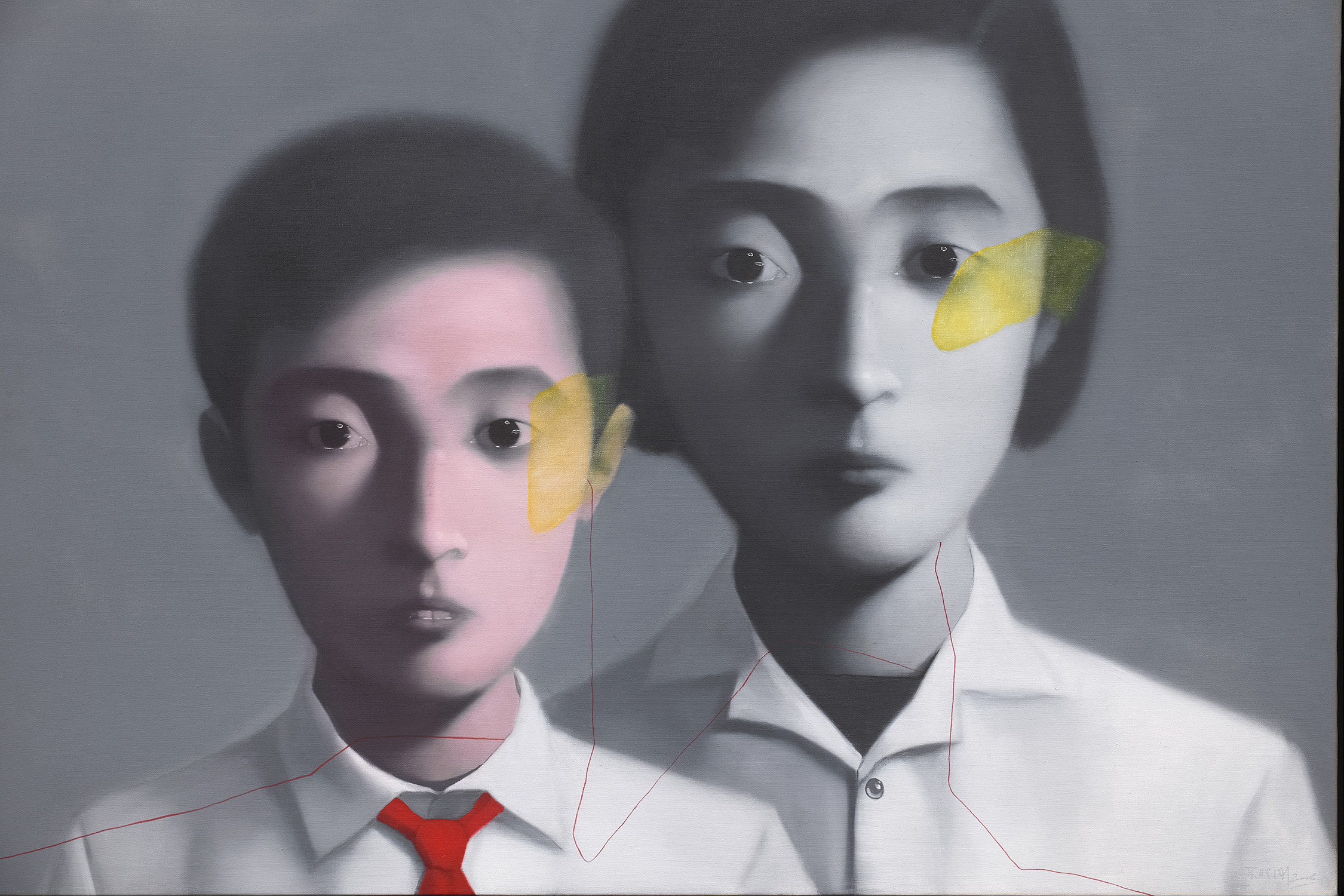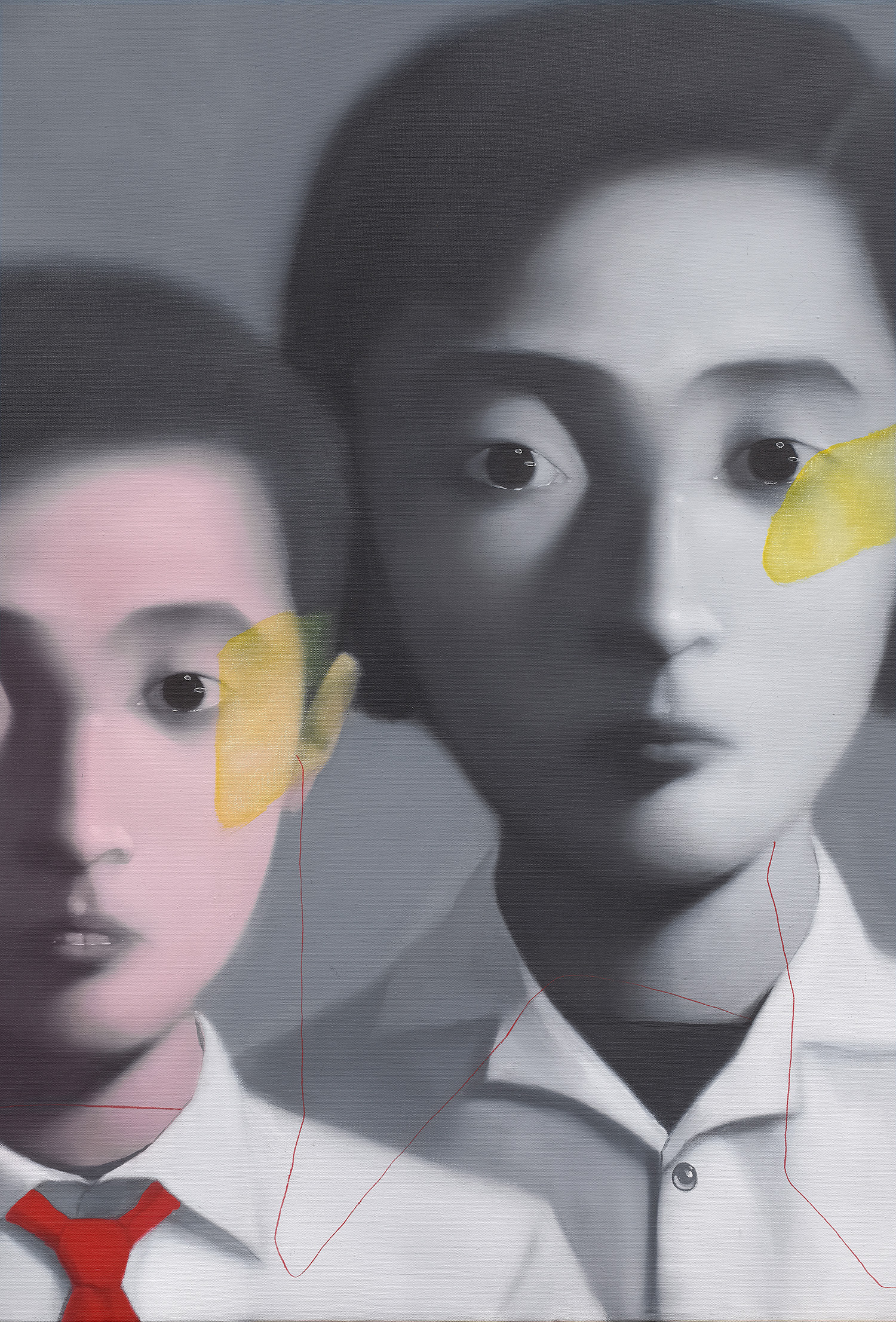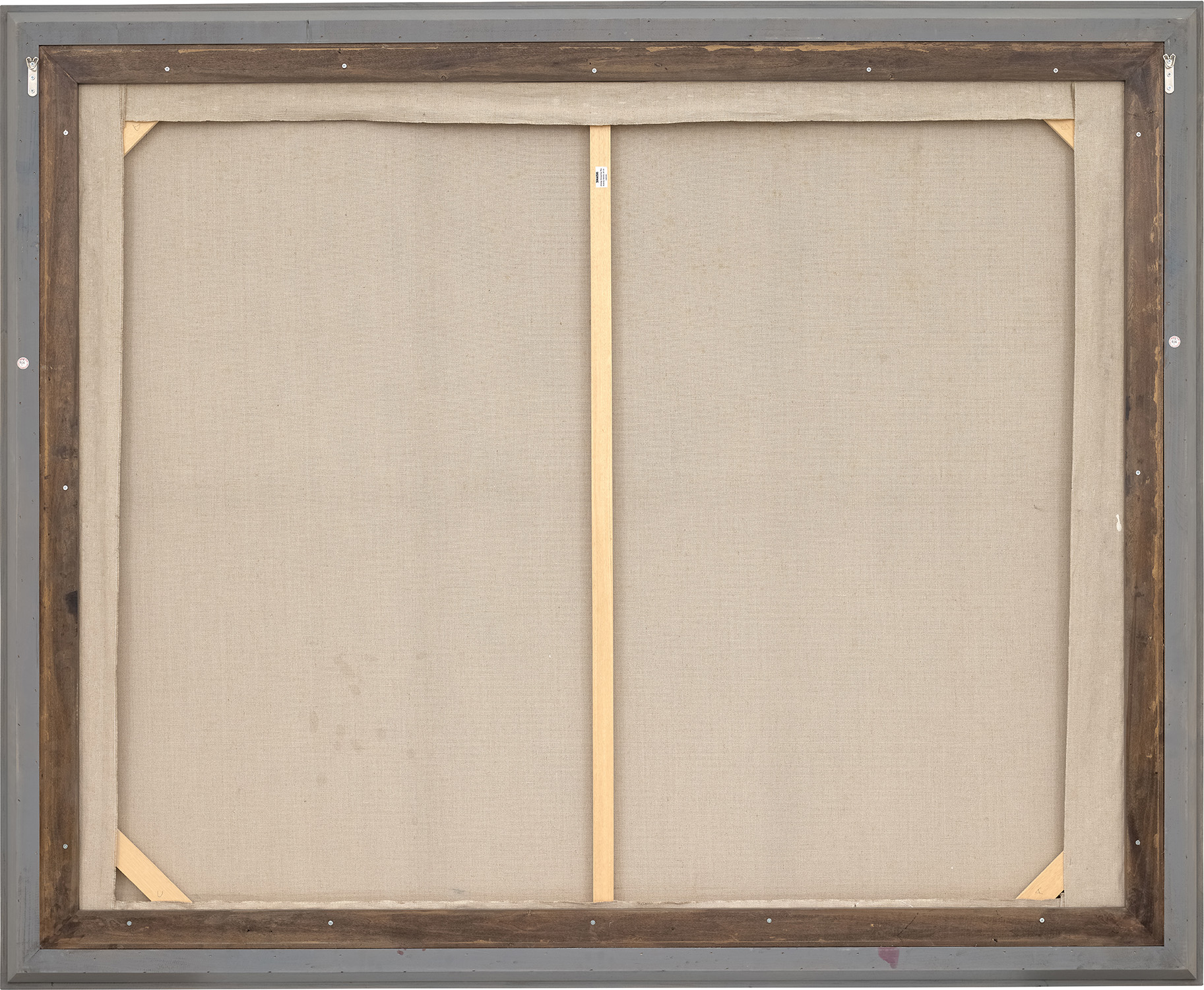







25Ж
Zhang Xiaogang
Bloodline Series - Big Family
Further Details
Full-Cataloguing
Zhang Xiaogang
Chinese | 1958Relying on memory and inspired by family portraits from the Chinese Cultural Revolution, Zhang Xiaogang creates surreal, subtle artworks that explore the notion of identity in relation to the Chinese culture of collectivism. Using a muted, greyscale palette, Xiaogang repeatedly depicts a series of unnervingly similar figures, often dressed in identical Mao suits, to create an endless genealogy of imagined forebears and progenitors. Their somber, melancholy gazes are interrupted only by thin red bloodlines intimating familial links as well as occasional pale splotches of color resembling birthmarks.
Xiaogang investigates how to express individual histories within the strict confines of a formula. His sitters, while appearing muted and compliant, are given physical exaggerations: oversized heads, tiny hands and long noses. These distortions imply stifled emotions and give a complex psychological dimension to the artist's work.